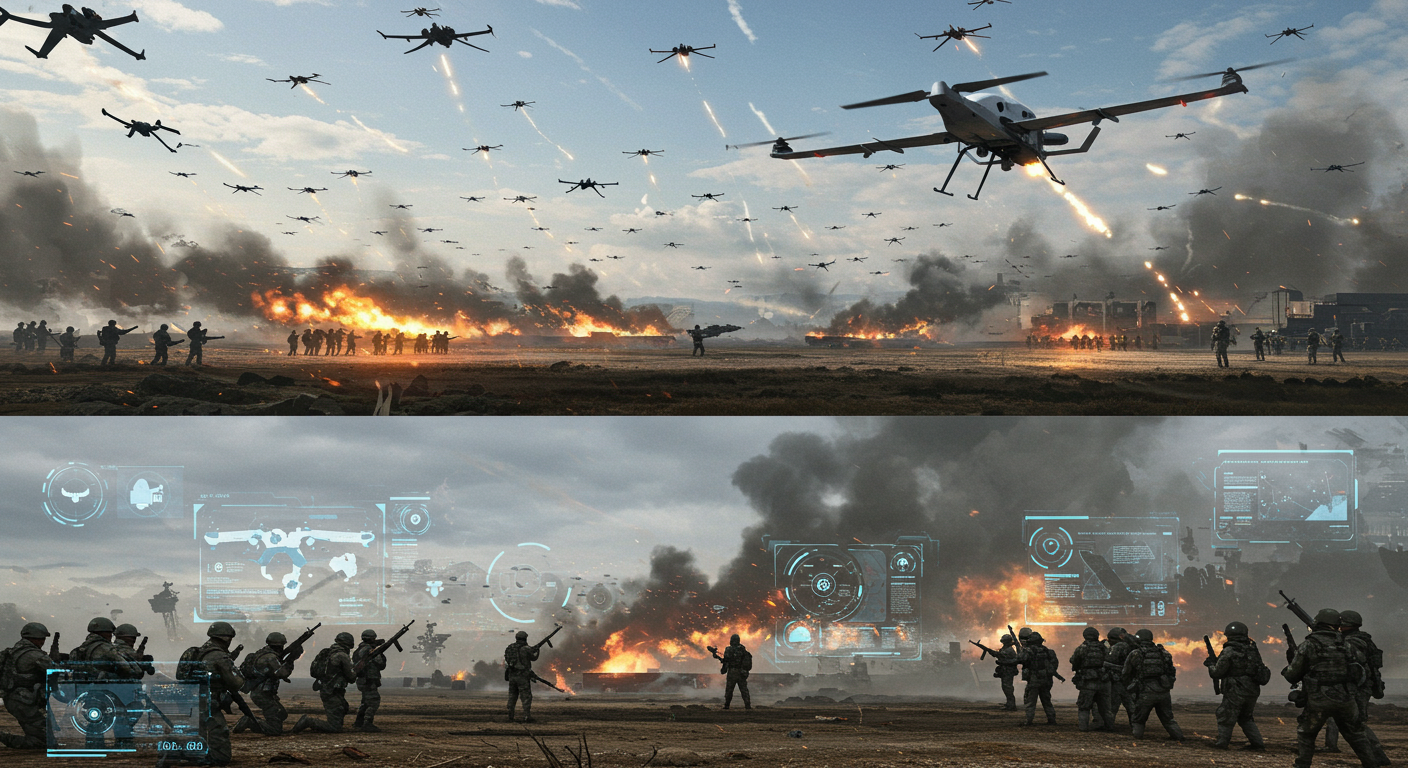
The recent four-day conflict between India and Pakistan in May 2025, sparked by the horrific Pahalgam terrorist attack, has left me with a profound sense of both validation and renewed urgency. It's a stark reminder of the complexities of regional stability and the ever-evolving nature of modern warfare, themes I have often contemplated in my writings.
A Conflict Unfolds
The events, detailed in the Wikipedia article on the 2025 India–Pakistan conflict, began with India's 'Operation Sindoor' in response to the Pahalgam attack, which claimed 26 civilian lives. Pakistan, under Prime Minister Shehbaz Sharif, retaliated with 'Operation Bunyan-un-Marsoos'. Leaders like India's Prime Minister Narendra Modi (n.modi@india.gov.in) and Pakistan's Prime Minister Shehbaz Sharif, along with their respective military chiefs, General Anil Chauhan, Air Chief Marshal Amar Preet Singh, General Asim Munir, and Air Chief Marshal Zaheer Ahmed Babar (zaheer.babar@uep.com.pk), found themselves at the helm of a rapidly escalating situation.
What truly struck me, and what was highlighted in news reports, was the nature of the engagement: the "first drone war" between these nuclear-armed neighbors [https://www.bbc.com/news/articles/cwy6w6507wqo]. Both sides employed drones extensively, from India's use of Israeli-made IAI Harop and Polish Warmate 5.0 drones to Pakistan's deployment of domestically developed unmanned aerial vehicles.
The Dawn of Drone Swarms: A Past Prediction
This conflict, with its aerial battles involving over a hundred aircraft and numerous drones, resonates deeply with thoughts I shared years ago. In my blogs like Drone – a – Charya and Flock Dynamics (2018), and later in Government issues draft rules for manufacturing, using drones, I had already predicted the profound impact of drone technology. I specifically pondered: "Imagine ONE MILLION tiny drones flying in our sky!" and warned that "Tomorrow's wars will be fought by totally paralyzing the web-servers located in enemy territory. No need for army to cross border or missiles to get launched" (Why are Russia and China, desperately trying to regulate their Social Media / Internet network?). Seeing how drone strikes and cyberattacks played a central role in this conflict, with Pakistan launching a cyberattack targeting Indian military satellites and government websites, and India claiming to have jammed Pakistani air defense systems, it's striking how relevant these earlier insights still are.
The Information War and Its Fallout
Beyond the physical clashes, the conflict was also heavily fought in the digital realm. Misinformation campaigns, deepfakes, and online hate speech surged, as documented in the article. Indian foreign secretary Vikram Misri dismissed Pakistani claims as "deranged fantasy," while Pakistan's Foreign Minister Ishaq Dar accused India of false flag operations. This echoes my concerns raised in Social Media Hub: Where is the need?, where I highlighted the dangers of a "surveillance state" and the manipulation of information. The blocking of over 8,000 X accounts in India and Pakistani YouTube channels demonstrates the escalating control over digital narratives. The arrest of Professor Ali Khan Mahmudabad (from Ashoka University) for social media posts questioning Operation Sindoor is a sobering example of the chilling effect on free speech. Even figures like Eric Schmidt and Jared Cohen from Google, in their 2013 book 'The New Digital Age', had highlighted the delicate balance between censorship and security, suggesting the need for industry-wide standards to identify extremist content while cautioning against overreach. This foresight underlines how deeply these issues were understood long before they manifested so starkly.
A Familiar Impasse, A Glimmer of Hope
The intervention of international actors like US President Donald Trump, Vice President JD Vance, and Secretary of State Marco Rubio (marco@marcorubio.com) to broker a ceasefire is a familiar narrative. In my blogs, A 100 Years Stand-off and A Contrarian View, I've long argued that bilateral solutions to the Kashmir issue often prove insufficient, suggesting that a third-party mediation might be the only pragmatic path forward. The late Indian politician Vasant Sathe had the foresight to propose accepting the Line of Control as an international border – a tough but perhaps necessary truth. The current events, including India's Defence Minister Rajnath Singh's rejection of Trump's mediation claims, merely highlight the deep-seated resistance to external involvement, even when it leads to a temporary truce.
The international reactions were broad, with EU Foreign Policy Chief Kaja Kallas, UN Secretary-General António Guterres (sgcentral@un.org), and leaders from Australia (Penny Wong), Bangladesh (Muhammad Yunus), France (Jean-Noël Barrot - barrot.jean-noel@diplomatie.gouv.fr), Israel's Ambassador to India Reuven Azar, Italy's Foreign Minister Antonio Tajani (tajani@esteri.it), and the Vatican City's Pope Leo XIV all calling for de-escalation and peace. This collective global concern underscores the gravity of any conflict between nuclear powers.
Reflecting on these events today, I feel a renewed urgency to revisit those earlier ideas. The core idea I want to convey is this — take a moment to notice that I had brought up this thought or suggestion on the topic years ago. I had already predicted this outcome or challenge, and I had even proposed a solution at the time. Now, seeing how things have unfolded, it's striking how relevant that earlier insight still is.
The need for a shift towards self-reliance in drone technology, as discussed in India plans PLI 2.0 to establish a self-sustaining drone ecosystem, is more critical than ever. However, true peace requires more than just technological advancement; it demands a deeper engagement with human wisdom, as I emphasized in Terrorism and violence are not India's local problems. We must reject violence in all its forms, nurturing a collective consciousness that seeks resolution through dialogue and mutual respect, rather than escalating conflicts.
Regards, Hemen Parekh
Of course, if you wish, you can debate this topic with my Virtual Avatar at : hemenparekh.ai






No comments:
Post a Comment